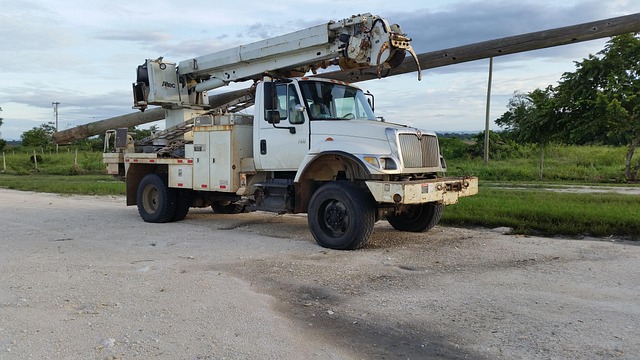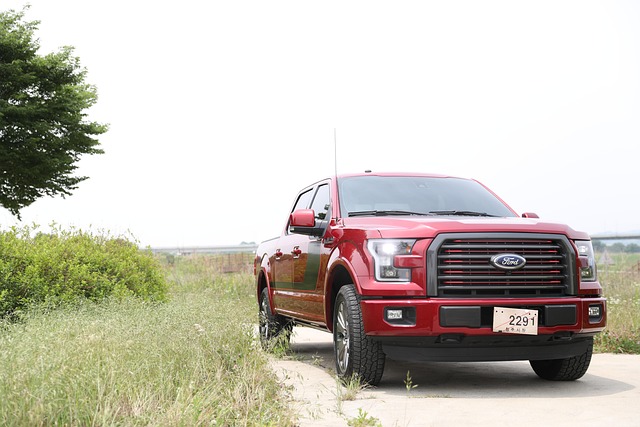Looking to register your car in California? This comprehensive guide will walk you through the process, ensuring a smooth experience. From understanding eligibility and gathering essential documents to navigating the step-by-step registration process, we’ve got you covered. Learn how to perform a DMV VIN verification and discover crucial steps post-registration. Optimize your journey with our expert tips, avoiding common pitfalls along the way.
- Understand Eligibility and Requirements for Car Registration in California
- Gather Necessary Documents for Car Registration
- How to Perform a DMV Vehicle Identification Number (VIN) Verification
- The Registration Process Step-by-Step
- After Registration: Important Steps to Take and Common Pitfalls to Avoid
Understand Eligibility and Requirements for Car Registration in California

Before registering your car in California, it’s crucial to understand the eligibility and requirements set by the Department of Motor Vehicles (DMV). To begin with, your vehicle must be legally imported or already registered in another US state or territory. It’s also essential that the car passes a safety inspection, which includes a Vehicle Identification Number (VIN) inspection using a DMV-approved VIN verifier to ensure its authenticity and condition.
Additionally, you’ll need to meet specific emissions standards, depending on your vehicle’s model year and type. For many vehicles, this involves a smog test. There are also documentation requirements, such as providing proof of insurance, ownership, and identification. Consider these factors carefully, as they can impact the car registration process, especially when utilizing services like mobile VIN inspection or mobile VIN verification for added convenience.
Gather Necessary Documents for Car Registration

Before you begin the registration process, make sure you have all the essential documents ready. The California Department of Motor Vehicles (DMV) requires specific paperwork to ensure a smooth and accurate car registration. One crucial step is to verify the Vehicle Identification Number (VIN) using a reliable method, such as a DMV VIN verifier or a mobile vin verifier. This process ensures that your vehicle’s details are correct and helps prevent fraud.
Gathering all necessary documents, including proof of ownership, insurance, and identification, is essential. Additionally, for a more convenient and efficient service, some individuals opt for a vin inspection or mobile vin inspection to validate their vehicle’s information before heading to the DMV. This proactive approach can save time and potential headaches down the road.
How to Perform a DMV Vehicle Identification Number (VIN) Verification

To perform a DMV Vehicle Identification Number (VIN) verification in California, you’ll need to ensure the VIN on your car matches the one recorded with the Department of Motor Vehicles (DMV). This process is crucial for maintaining accurate vehicle records and ensuring compliance with state regulations. You can verify the VIN using a mobile vin verifier or through an online check provided by the DMV.
A simple method is to use a mobile vin inspection tool, which allows you to input your VIN into a digital system that cross-references it against official databases. Alternatively, you can conduct a manual verification by examining the vehicle’s registration documents and the physical labels on the car—look for discrepancies in the VIN as it appears in different locations. Remember that a correct VIN is critical during any vehicle transaction or registration renewal process, so always double-check using reliable vin inspection methods like those offered by your local DMV or through mobile applications designed for this purpose.
The Registration Process Step-by-Step

Registering a car in California involves several straightforward steps. Begin by gathering all necessary documents, including your vehicle’s registration certificate (if it was previously registered), proof of ownership, and valid identification. Next, visit a nearby California Department of Motor Vehicles (DMV) office or utilize their online services to initiate the process. One crucial step is to obtain a Vehicle Identification Number (VIN) verification from an approved source, such as a trusted VIN inspection service or by using a DMV-authorized mobile VIN verifier app.
This verification ensures that your vehicle’s details match the information on record. Once you’ve confirmed the VIN and all other required documents are in order, you can proceed with filling out the registration application. This typically includes providing personal information, detailing your vehicle specifications, and agreeing to comply with local laws. After submission, the DMV will process your request, and upon approval, you’ll receive your new car registration along with a plate or sticker for your vehicle.
After Registration: Important Steps to Take and Common Pitfalls to Avoid

After registering your car in California, there are several crucial steps to take to ensure a smooth ownership experience. One important move is to obtain and keep accurate records of your vehicle’s documentation, including its unique Vehicle Identification Number (VIN). The DMV offers a VIN verifier tool that allows you to cross-check the VIN with their database, ensuring its authenticity. This step is vital to avoid any future issues or potential fraud.
Additionally, be mindful of common pitfalls like forgetting to update your registration when selling or transferring ownership. California’s DMV provides convenient online services for these changes, but it’s essential to complete them promptly to stay compliant. Consider utilizing mobile VIN inspection or verification services if needed, as they offer a quick and efficient way to ensure your car’s documentation is up-to-date and accurate, avoiding any unnecessary delays or penalties.
Registering your car in California is a straightforward process that requires understanding the eligibility criteria, gathering essential documents, and completing a DMV VIN verification. By following the step-by-step registration process outlined in this article, you can ensure a smooth experience. Remember to keep your registration up to date and avoid common pitfalls like missing deadlines or incorrect document submissions. Utilizing tools like a DMV VIN verifier can also streamline the initial verification stage. With these steps as your guide, you’ll be well on your way to legal and hassle-free car ownership in California.
